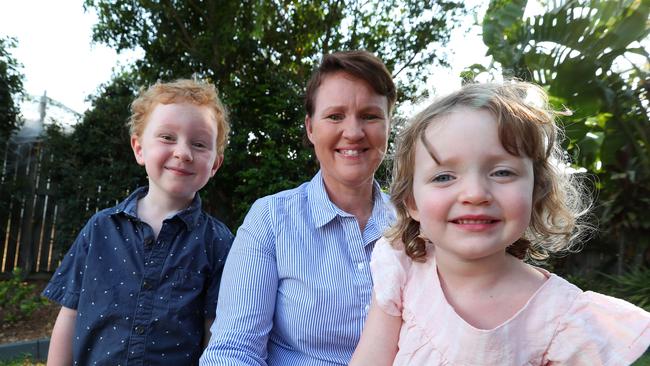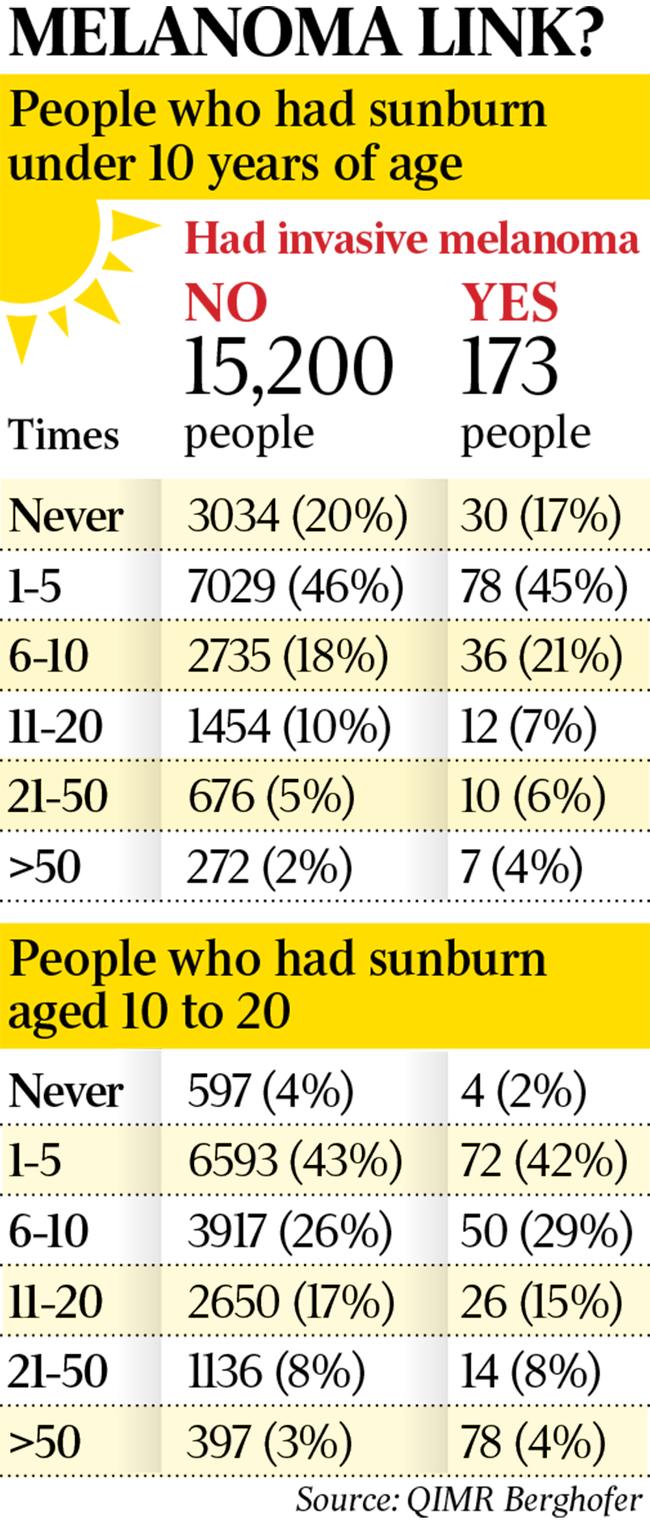Study reveals secret peril of skin cancer
People with a genetic predisposition need only a small amount of time in the harsh Australian sunshine to develop melanoma.

People with a genetic predisposition to developing melanoma require only a small amount of time in the harsh Australian sunshine to develop the skin cancer.
A study by QIMR Berghofer shows 22 different genes can determine the amount of sun exposure needed to trigger the process that leads to melanoma.
Those with a high genetic risk can develop melanoma after brief sun exposure as a child, while people with low genetic risk may only develop the cancer after a lifetime in the sun.
The study also showed those who grew up under the Australian sun had a 50 per cent higher chance of melanoma than someone who migrated to the country as an adult.
Australia has the highest rates of melanoma in the world, with about 12,000 people a year being diagnosed with the cancer.
Lead researcher professor David Whiteman told The Australian the study proved people with other genetic predispositions could be just as susceptible to fair-skinned people, even if they had dark hair and olive skin.
“(People with high genetic risk) don’t need much sunlight to get started,” Dr Whiteman said.
“Whereas other people who carry a low genetic risk of melanoma, who might have genes for DNA repair mechanisms and the immune system that give them an advantage, can still get melanoma but they need to be chronically exposed to it. It’s been able to show for the first time that it’s not just the obvious genes but there are other genes as well.”
The new knowledge comes from a giant database of DNA from 15,000 Queenslanders, QSkin, which was used to inform the world’s largest study of genetic links to skin cancer, published today in the British Journal of Dermatology.
The data explains why people with a predisposition could develop melanomas in areas of their body with low sun contact.
“Those people seem to have a higher genetic load and their cells are a bit more prone to sun exposure,” Dr Whiteman said.
“When they get a short, sharp burst of sun as a child it might be enough to trigger some changes in the cells, cause some mutations and then the process starts from there and they turn up with a melanoma a few decades later.”
Dr Whiteman said people without a genetic predisposition were not immune but would require more exposure to sunlight to develop a melanoma.
Greater understanding about the genes involved could aid in genetic screening services that advise how predisposed people are to melanoma or even the development of drugs or lotions to help repair damaged cells.
Brisbane resident Alissa Gordon, 39, has a family history of melanoma and took part in the study. A recent biopsy on one of her moles indicated it would likely progress to a melanoma.
Ms Gordon said that as a child she was not wary of the effect genetics had on skin cancer: “We probably would have made different choices growing up if we had been more aware. We would have spent less time in the sun.”
She said she was wary of the amount of time her two young children spent in the sun and encouraged more Australians to share their DNA with QSkin.




